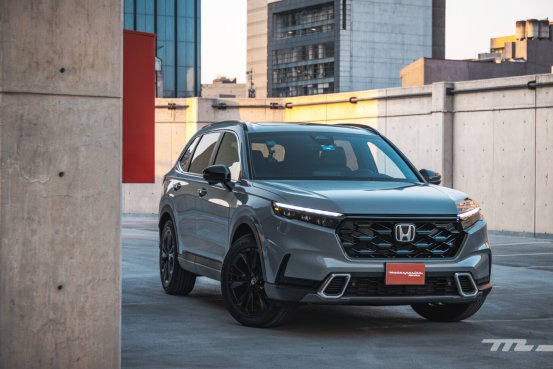The 2025 Honda CR-V continues to set the standard for compact SUVs, offering a blend of comfort, practicality, and advanced technology. From the EX trim to the premium Sport Touring Hybrid, it remains a top choice for drivers seeking reliability, efficiency, and modern styling—hallmarks of Honda’s longstanding reputation.

Overview and Design
Entering its sixth generation since 2023, the 2025 CR-V retains its recognizable shape while introducing subtle yet meaningful design enhancements. The front end features a bold grille, clean bodywork, and sharp LED accents, giving the SUV a confident, polished appearance. Inside, upgraded materials and enhanced digital features improve overall refinement. Early owner impressions highlight its family-oriented qualities, such as a spacious cabin, smooth ride, and user-friendly infotainment system. While many praise its well-rounded character, some drivers feel the handling favors comfort over sportiness.
Performance and Powertrain Options
Honda provides two primary powertrain choices for the 2025 CR-V. The base 1.5-liter turbocharged four-cylinder produces roughly 190 horsepower and 179 lb-ft of torque, paired with a continuously variable transmission (CVT). The hybrid variant pairs a 2.0-liter engine with dual electric motors for approximately 204 horsepower. Most trims offer front-wheel or all-wheel drive. Performance reviews suggest the CR-V emphasizes refinement and ease of driving over aggressive acceleration, while the hybrid stands out for smooth power transitions and responsive handling. Suspension tuning offers a good balance of comfort and control, even on uneven roads. Standard towing capacity is 1,500 pounds, with the hybrid handling about 1,000 pounds—enough for light hauling tasks.
Interior, Space, and Comfort
The 2025 CR-V’s cabin impresses with its roomy, ergonomic layout. Rear passengers benefit from roughly 39.3 inches of legroom, enhancing comfort on longer trips. Cargo space remains class-leading, offering 39.3 cubic feet behind the rear seats and up to 76.5 cubic feet with seats folded. A minimalist dashboard features a horizontal layout, digital gauges with a 7-inch display (or 9 inches on higher trims), and a central infotainment screen. Upgraded materials, soft-touch surfaces, and refined finishes elevate the interior ambiance. Seat comfort and adjustability are excellent, and improved sound insulation makes highway driving noticeably quieter.
Fuel Efficiency and Economy
Efficiency remains a strong selling point. The turbocharged engine achieves roughly 28 mpg city, 34 mpg highway, and 30 mpg combined for FWD models, with slightly lower numbers for AWD. Hybrid versions deliver impressive fuel economy, about 43 mpg city, 36 mpg highway, and 40 mpg combined (FWD), with AWD variants reaching roughly 40/34/37 mpg. Real-world performance aligns closely with EPA estimates, particularly in city driving, where the hybrid’s ability to operate briefly in EV mode enhances fuel savings and reduces emissions.
Market Position and Value Retention
In the competitive compact SUV segment, the CR-V faces rivals such as the Toyota RAV4, Mazda CX-5, Hyundai Tucson, and Ford Escape, each with distinct strengths. The RAV4 emphasizes hybrid options and strong resale, the CX-5 delivers a premium interior and engaging driving experience, the Tucson stands out with advanced technology and warranty coverage, and the Escape appeals with varied powertrains and digital features.
SUV Model | Starting MSRP (est.) | Key Strengths | Fuel Economy (combined) |
2025 Honda CR-V | $28,500 – $39,000 | Reliability, interior space, efficiency | 30–40 mpg |
2025 Toyota RAV4 | $28,000 – $42,000 | Powertrain variety, resale value | 30–41 mpg |
2025 Mazda CX-5 | $27,500 – $40,000 | Driving dynamics, upscale interior | 26–28 mpg |
2025 Hyundai Tucson | $27,000 – $38,500 | Warranty, tech features | 29–38 mpg |
2025 Ford Escape | $28,000 – $39,500 | Technology, engine variety | 28–37 mpg |
Estimates are subject to change; buyers should confirm specifications before purchase.
Honda’s long-standing reliability helps the CR-V maintain strong resale value. Historically, it depreciates more slowly than many competitors, with projected three-year residuals exceeding 60%. For drivers seeking a dependable, efficient, and comfortable SUV with lasting value, the 2025 CR-V remains a top contender in its class.
